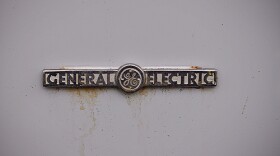Federal regulators have approved General Electric's plan to dismantle a Hudson River PCB cleanup plant used during six years of dredging, which concluded this fall.
The Environmental Protection Agency says Thursday that its approval allows GE to begin dismantling the 110-acre sediment processing facility and restore the site as outlined in the plan. The demobilization plan will continue into 2016.
The Hudson River Natural Resource Trustees, a three-member group of government officials, had asked the EPA to delay dismantling the plant in case more dredging is needed. EPA said a temporary facility could be employed if that happens.
The dredging project covered a 40-mile stretch of the river north of Albany.
The village of Fort Edward is considering economic development options for the processing plant site.
EPA Statement on Approval of PCB Processing Facility Demobilization and Restoration Plan for Hudson River Cleanup
After considering public input, the EPA has approved a plan that outlines the multi-step process General Electric (GE) will follow to dismantle and decontaminate the 110 acre PCB sediment processing facility that was built to support the dredging of the Hudson River PCBs Superfund Site. The plan, called the Processing Facility Demobilization and Restoration Plan, is required by the 2006 legal agreement between GE and the EPA for the dredging work. The EPA will oversee GE’s performance of the work required by the plan.
With the sixth and final season of dredging now complete, the approval provides permission to GE to begin the demobilization and restoration process as outlined in the plan.
The demobilization process will continue into 2016. In general, the multi-step demobilization process includes:
-Decontamination of equipment and infrastructure (e.g. unloading equipment, buildings, concrete surfaces etc.)
-Sampling of equipment/materials
-Final placement of equipment/materials (e.g. sale, reuse, salvage/recycling, or off-site disposal)
-Environmental sampling (soil, groundwater, sediment and surface water)
-Property restoration
Backfilling of previously dredged areas with clean material was completed earlier this week. The processing facility will continue to load railcars until all dredged material has been transported off site, which is expected to occur by the end of the year. The majority of comments received by the EPA on the draft demobilization and restoration plan focused on two central themes. Some commenters did not want the EPA to allow the demobilization to occur in case there is an opportunity for additional dredging. No such opportunity is imminent and should an agreement be struck by parties other than the EPA a temporary processing facility can be constructed. The EPA has used temporary dewatering facilities at other sites around the country. Dismantling the 100-acre plant would not preclude future dredging.
Other commenters requested that infrastructure be left in place to support future development of the site for the economic benefit of the municipalities and the surrounding area. It is anticipated that some buildings, concrete/asphalt roads and surfaces, the wharf and the rail yard will remain. The final determination on what will be left in place will depend on ongoing discussions among the parties (the EPA, GE, the property owners and the municipalities), the results of sampling, and the ability for the various components of the site to be decontaminated. The EPA has been informed that the Town and Village of Fort Edward are exploring opportunities for reuse of the site to support future economic development in the area.







